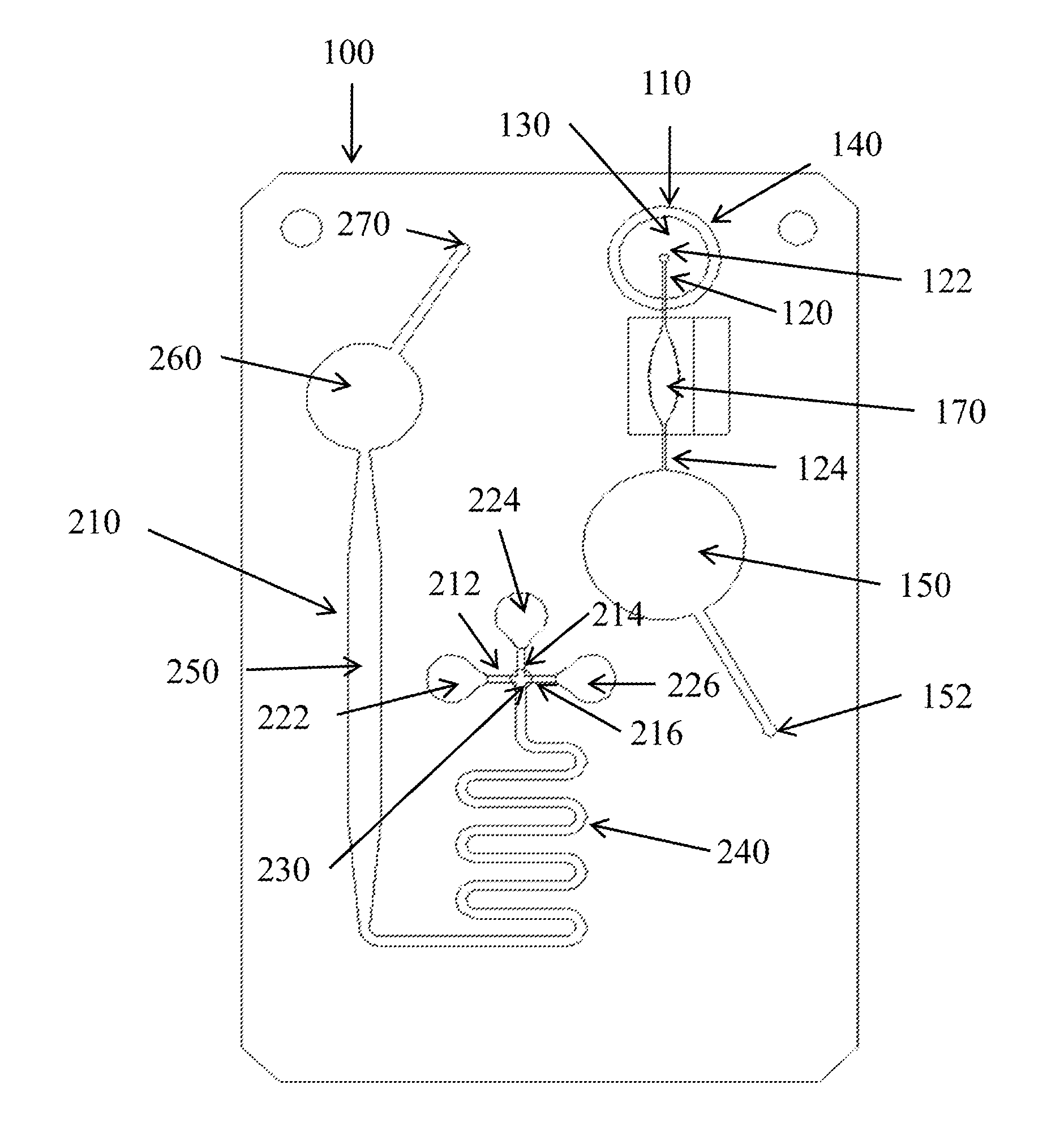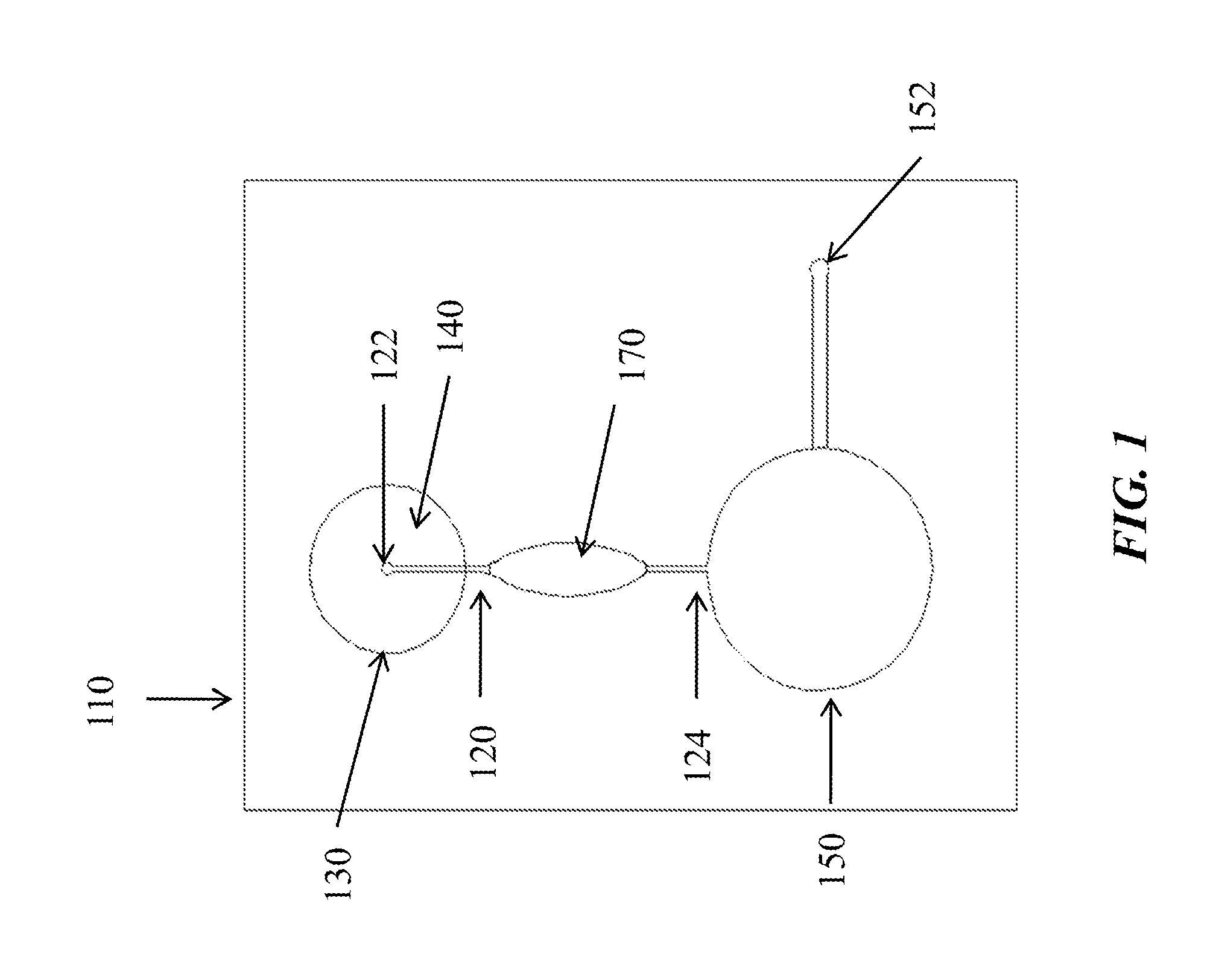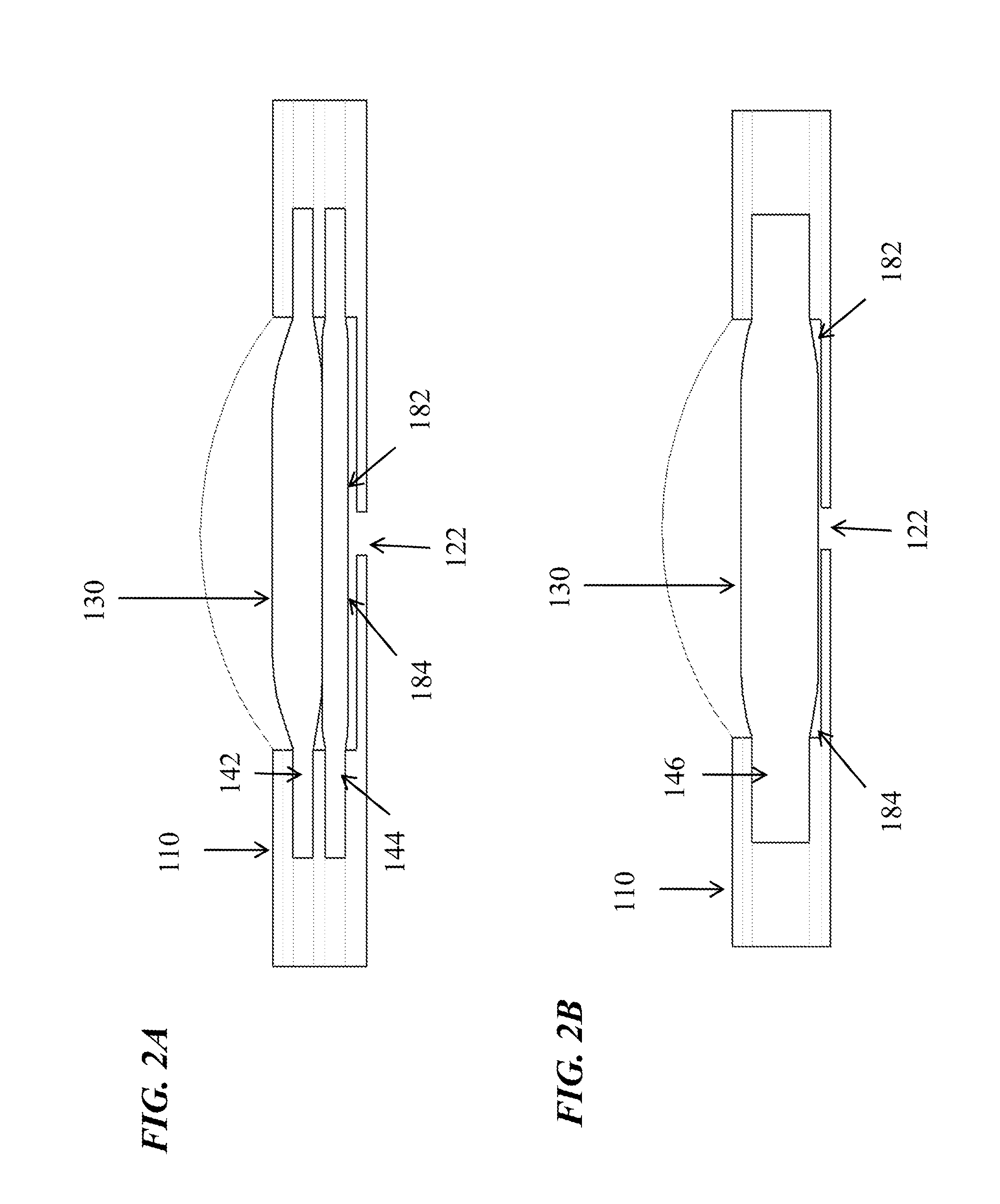Microfluidic devices and methods for performing serum separation and blood cross-matching
a microfluidic device and serum separation technology, applied in the field of microfluidic devices and methods for performing serum separation and blood cross-matching, can solve the problems of hematocrit-dependent variation among samples, interfering with cross-match agglutination reactions, colorimetric tests, etc., and requiring sample centrifugation. , the conventional method of serum separation is not amenable to microscale adaptation, and the transfusion of mismatched blood is not easy to
- Summary
- Abstract
- Description
- Claims
- Application Information
AI Technical Summary
Benefits of technology
Problems solved by technology
Method used
Image
Examples
example 1
Assessment of Glass Fiber Filters in Promoting Blood Coagulation
[0065]This example demonstrates that glass fiber filters promote blood coagulation on a microfluidic device.
[0066]Various borosilicate glass fiber filters as set forth in Table 1 were stacked with the Pall Vivid GR membrane and laminated into “cartridges” (i.e., into a microfluidic device) using standard construction methods known in the art. For testing, 100 μL of fresh, whole blood was applied to the filter and allowed to clot for up to 15 minutes. Liquid sample was pulled by vacuum into a collection chamber. Performance of the filters was evaluated based on the volume of serum obtained in one minute and on the color of the serum. As shown in Table I, several of the glass fiber filters tested enabled on-card serum separation. Pink serum indicates that some degree of hemolysis has occurred. These results indicate that serum separation can, surprisingly, be achieved on-card (i.e., within a microfluidic device) by incorp...
example 2
Design of a Microfluidic Subcircuit for Serum Separation
[0068]This example demonstrates serum separation by a microfluidic device incorporating a glass fiber, composite filter.
[0069]A microfluidic subcircuit with a collection chamber and a port was designed to separate serum from a whole blood sample. Fresh, whole finger-stick collected blood (approximately 200 μL) was applied to a composite filter as described above and allowed to clot. In operation, the user's index finger compresses a finger pump, while a second finger covers the vent holes. The vacuum generated when the index finger is removed pulls the sample through the filters into the collection chamber. The filtered sample was collected using a mechanical pipettor with a disposable tip. The recovered material was characterized as serum by measurement of the residual fibrinogen content. Plasma contains fibrinogen, while serum is depleted of this protein due to activation of the clotting cascade, during which fibrinogen is co...
PUM
| Property | Measurement | Unit |
|---|---|---|
| sizes | aaaaa | aaaaa |
| pore size | aaaaa | aaaaa |
| diameter | aaaaa | aaaaa |
Abstract
Description
Claims
Application Information
 Login to View More
Login to View More - R&D
- Intellectual Property
- Life Sciences
- Materials
- Tech Scout
- Unparalleled Data Quality
- Higher Quality Content
- 60% Fewer Hallucinations
Browse by: Latest US Patents, China's latest patents, Technical Efficacy Thesaurus, Application Domain, Technology Topic, Popular Technical Reports.
© 2025 PatSnap. All rights reserved.Legal|Privacy policy|Modern Slavery Act Transparency Statement|Sitemap|About US| Contact US: help@patsnap.com



